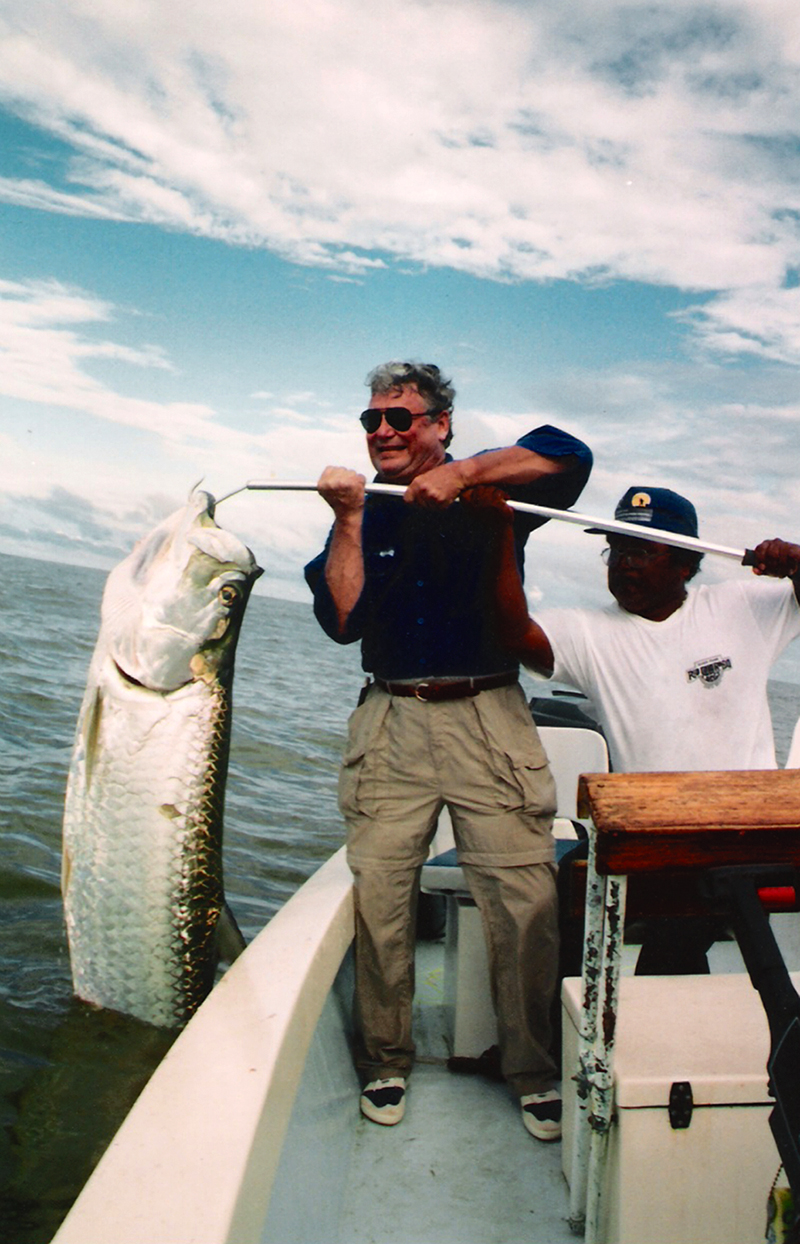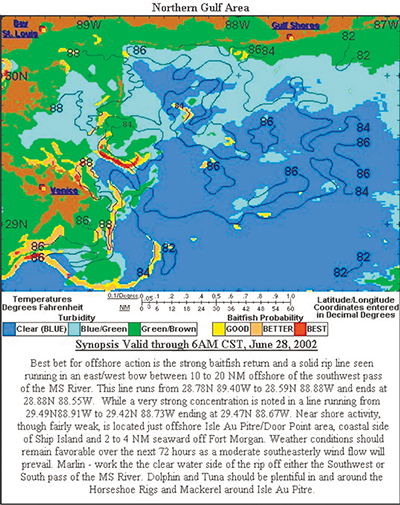
NASA, the Fisherman’s Friend
Originating Technology/NASA Contribution
Every angler has his secrets, whether it be an old family recipe for stink bait, a midnight worm-hunting ritual, or the most coveted of all, the no-fail fishing hole. Most of these secrets are lore and legend, passed through generations, and coveted more than the family’s best tableware. Each of these kernels of wisdom promises the fisherman a bite at the end of the line, but very few are rooted in fact and science.
There is one, though...
NASA partnered with a company on the bayous of Mississippi and Louisiana to use satellite data to create a marine information system, a space-age fish finder.
This product provides up-to-date information about the location of a variety of fish, including yellowfin tuna, bluefish, blue marlin, white marlin, sailfish, blackfin tuna, little tunny, and swordfish. The system shows peaked catch rates, and may be the only true fish-finding product on the market.
Partnership
Digital Media, Inc. (DMI), teamed with fellow Gulf Coast native, NASA’s Stennis Space Center, through Mississippi’s Space Commerce Initiative and tapped into a wealth of satellite imagery and weather-forecasting tools essential for guiding a successful fishing trip.
DMI is a television production company specializing in videos for outdoor enthusiasts, including broadcasts on hunting, shooting, golfing, camping, local attractions, and of course, fishing. Recently, they have focused energy and attention on geospatial products for the broadcast industry.
Product Outcome
The DMI fish-finding service combines remote sensing data with proprietary software and can provide information about the entire coastal United States, the Gulf of Mexico, the Caribbean, and Central America. In the past, marine informational services have been isolated to specific geographic regions.
DMI collects satellite information about water surface temperature, temperature gradients, water clarity, and depth, then uses a mathematical algorithm originally developed and tested by the National Marine Fisheries Service that accurately identifies conditions where bait fish are likely to congregate. Using Global Positioning System coordinates, DMI can direct fishing parties straight to these spots. According to DMI owner Vincent Phillips, this “is the only service to include the three primary pieces of the puzzle that are necessary to accurately pinpoint the concentrations of sportfish and their associated forage.”
The fish-finding service merges the water temperature, turbidity data, and the proprietary algorithm into an easy-to-read printout. Fishermen can purchase this readout as a daily forecast, a seasonal product, or an annual subscription. According to Phillips, “Marine information of this type traditionally has been very expensive and consequently used by the few who could afford it.” This service, however, is a fraction of the price of other fish-finding services, and the only one to offer the complete picture.
The service provides 24-hour access to images and text of marine information. The images are available via Internet in full color or in black and white for facsimile transmission, and a fisherman or boat captain can have a fishing map sent directly to the deck of his boat. These images are not only for the experienced fisherman, though; the readouts are clear enough that even the novice fisherman should be able to decipher them.
Fishermen who use the fish-finding service save time and money. Since they know where the fish are, they need only motor out to the exact location. It would normally take hours of guesswork to tool around on the water trying to find a productive location for fishing. Fishermen drop the line, wait, drop the line, wait, and then move to the next spot. This wastes valuable fish catching time, and with the prices of commercial fishing ventures and gasoline considered, this advent saves everyone money, as it reduces the time that the boat is being operated unproductively. The saved fuel has obvious environmental benefits.
This product appeals to a wide variety of marine interests, and it has found users among sportsmen, commercial fishermen, sailors, divers, charter boat captains, and private boaters. DMI also provides printouts to special interest groups, including saltwater tournament competitors and marine researchers conducting experiments with tideland, near-shore, and deep water conditions.
Broadcast and print media can also subscribe to these services and then provide general maps to accompany their weather reports. This product shows viewers general trends in their locations, and is a great tool to encourage involvement by locals and visitors alike in coastal activities, events, and sports.

This easy-to-read display can be broadcast directly to an onboard computer, telling the boat’s captain exactly where to go to catch the most fish.

Although the fish-finding service takes the guesswork out of the trip, the angler will still have other challenges to reckon with.













